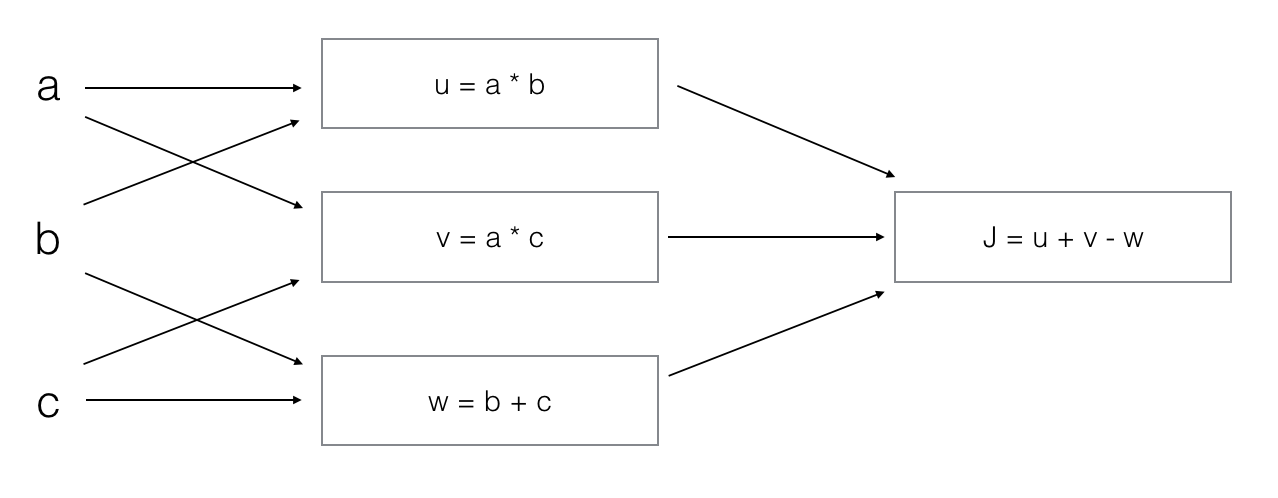神经网络与深度学习第二周测验 Neural Network Basics
1.What does a neuron compute?
什么是神经元计算
- 🔲A neuron computes the mean of all features before applying the output to an activation function
在将输出应用于激活函数之前,神经元会计算所有特征的均值
- 🔲A neuron computes a function g that scales the input x linearly (Wx + b)
神经元计算一个函数g,该函数对输入x进行线性缩放为(Wx + b)
- 🔲A neuron computes an activation function followed by a linear function (z = Wx + b)
神经元先计算激活函数,然后计算线性函数(z = Wx + b)
- ✅A neuron computes a linear function (z = Wx + b) followed by an activation function
神经元计算线性函数(z = Wx + b),然后计算激活函数
2.Which of these is the "Logistic Loss"?
哪个是逻辑损失函数
- ✅

- 🔲

- 🔲

- 🔲

3.Suppose img is a (32,32,3) array, representing a 32x32 image with 3 color channels red, green and blue. How do you reshape this into a column vector?
假设img是(32,32,3)数组,表示一个32x32图像,具有3个颜色通道,红色,绿色和蓝色。 如何将其重塑为列向量?
- 🔲x = img.reshape((1,32*32,*3))
- 🔲x = img.reshape((3,32*32))
- ✅x = img.reshape((32*32*3,1))
- 🔲x = img.reshape((32*32,3))
4.Consider the two following random arrays "a" and "b":
考虑以下两个随机数组“ a”和“ b”
a = np.random.randn(2, 3) # a.shape = (2, 3)
b = np.random.randn(2, 1) # b.shape = (2, 1)
c = a + b
What will be the shape of "c"?
c的形状为?
- 🔲c.shape = (3, 2)
- 🔲c.shape = (2, 1)
- 🔲The computation cannot happen because the sizes don't match. It's going to be "Error"!
- ✅c.shape = (2, 3)
5.Consider the two following random arrays "a" and "b":
考虑以下两个随机数组“ a”和“ b”
a = np.random.randn(4, 3) # a.shape = (4, 3)
b = np.random.randn(3, 2) # b.shape = (3, 2)
c = a*b
What will be the shape of "c"?
c的形状为?
- ✅The computation cannot happen because the sizes don't match. It's going to be "Error"!
由于大小不匹配,因此无法进行计算。 这将是“错误”!
- 🔲c.shape = (4,2)
- 🔲c.shape = (4, 3)
- 🔲c.shape = (3, 3)
6.Suppose you have n_x input features per example.
假设每个示例都有n_x个输入功能。
Recall that X=[x(1)x(2)...x(m)].
回想一下X
What is the dimension of X?
X的维度是?
- ✅(nx,m)
- 🔲(m,1)
- 🔲(1,m)
- 🔲(m,nx)
7.Recall that "np.dot(a,b)" performs a matrix multiplication on a and b, whereas "a*b" performs an element-wise multiplication.
回想一下,np.dot(a,b)对a和b执行矩阵乘法,而a * b对元素进行乘法。
Consider the two following random arrays "a" and "b":
考虑以下两个随机数组“ a”和“ b”
a = np.random.randn(12288, 150) # a.shape = (12288, 150)
b = np.random.randn(150, 45) # b.shape = (150, 45)
c = np.dot(a,b)
What is the shape of c?
c的形状为?
- 🔲The computation cannot happen because the sizes don't match. It's going to be "Error"!
由于大小不匹配,因此无法进行计算。 这将是“错误”!
- 🔲c.shape = (12288, 150)
- ✅c.shape = (12288, 45)
- 🔲c.shape = (150,150)
8.Consider the following code snippet:
考虑以下代码片段
# a.shape = (3,4)
# b.shape = (4,1)
for i in range(3):
for j in range(4):
c[i][j] = a[i][j] + b[j]
How do you vectorize this?
它的功能是?
- 🔲c = a + b
- ✅c = a + b.T
- 🔲c = a.T + b.T
- 🔲c = a.T + b
9.Consider the following code:
考虑以下代码
a = np.random.randn(3, 3)
b = np.random.randn(3, 1)
c = a*b
What will be c?
c是啥?
- ✅This will invoke broadcasting, so b is copied three times to become (3,3), and ∗ is an element-wise product so c.shape will be (3, 3)
这将调用python的广播机制,因此b被复制了3次成为(3,3),并且∗是元素方式的乘积,因此c.shape将为(3,3)
- 🔲It will lead to an error since you cannot use “*” to operate on these two matrices. You need to instead use np.dot(a,b)
由于不能使用“ *”在这两个矩阵上进行运算,因此将导致错误。 需要改为使用np.dot(a,b)
- 🔲This will multiply a 3x3 matrix a with a 3x1 vector, thus resulting in a 3x1 vector. That is, c.shape = (3,1).
这会将3x3矩阵a与3x1向量相乘,从而得到3x1向量。 即c.shape =(3,1)。
- 🔲This will invoke broadcasting, so b is copied three times to become (3, 3), and *∗ invokes a matrix multiplication operation of two 3x3 matrices so c.shape will be (3, 3)
这将调用python广播,因此b被复制三次以成为(3,3),而∗调用两个3x3矩阵的矩阵乘法运算,因此c.shape将为(3,3)
10.Consider the following computation graph.
考虑以下计算图

What is the output J?
J的输出是什么?
- 🔲J = (c - 1)*(b + a)
- ✅J = (a - 1) * (b + c)
- 🔲J = (b - 1) * (c + a)
- 🔲J = a*b + b*c + a*c
文章来源: blog.csdn.net,作者:沧夜2021,版权归原作者所有,如需转载,请联系作者。
原文链接:blog.csdn.net/CANGYE0504/article/details/117230389
- 点赞
- 收藏
- 关注作者






评论(0)